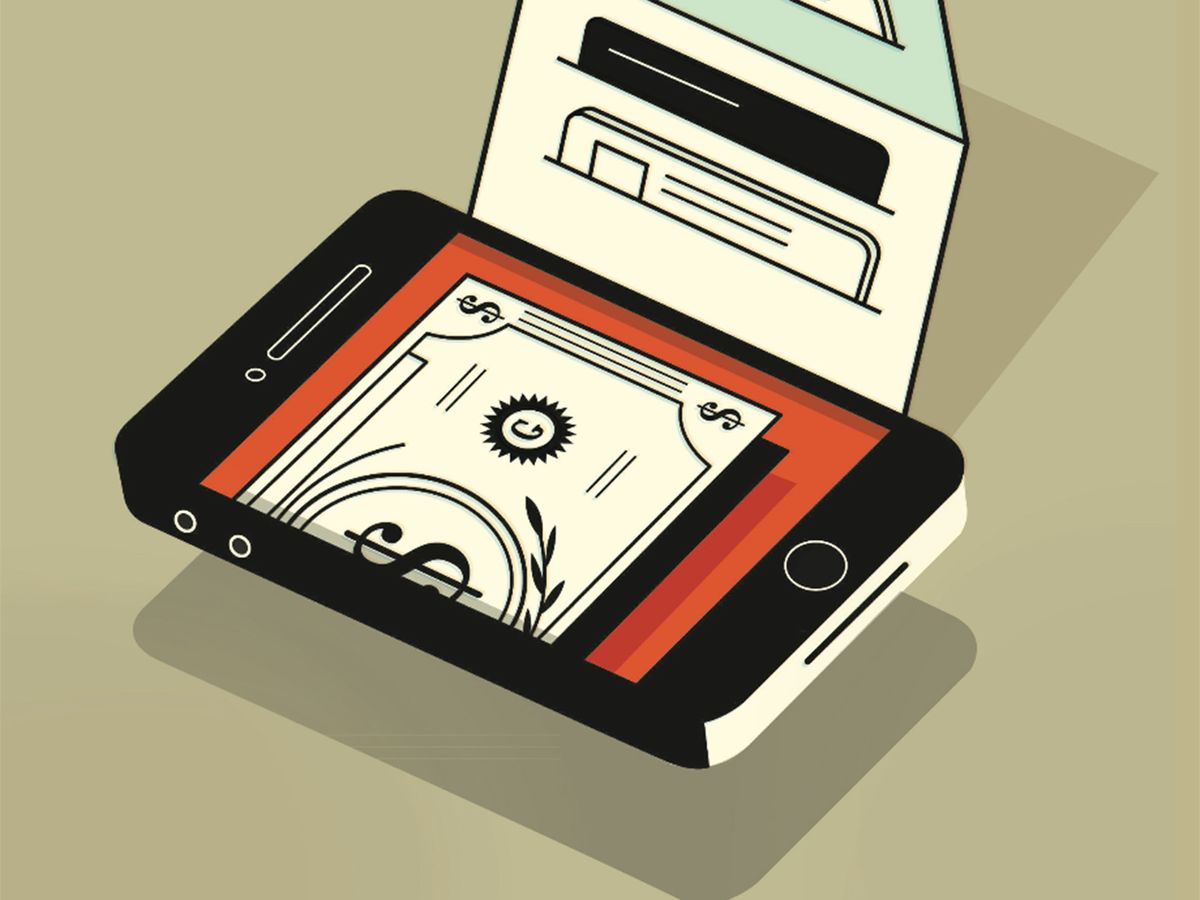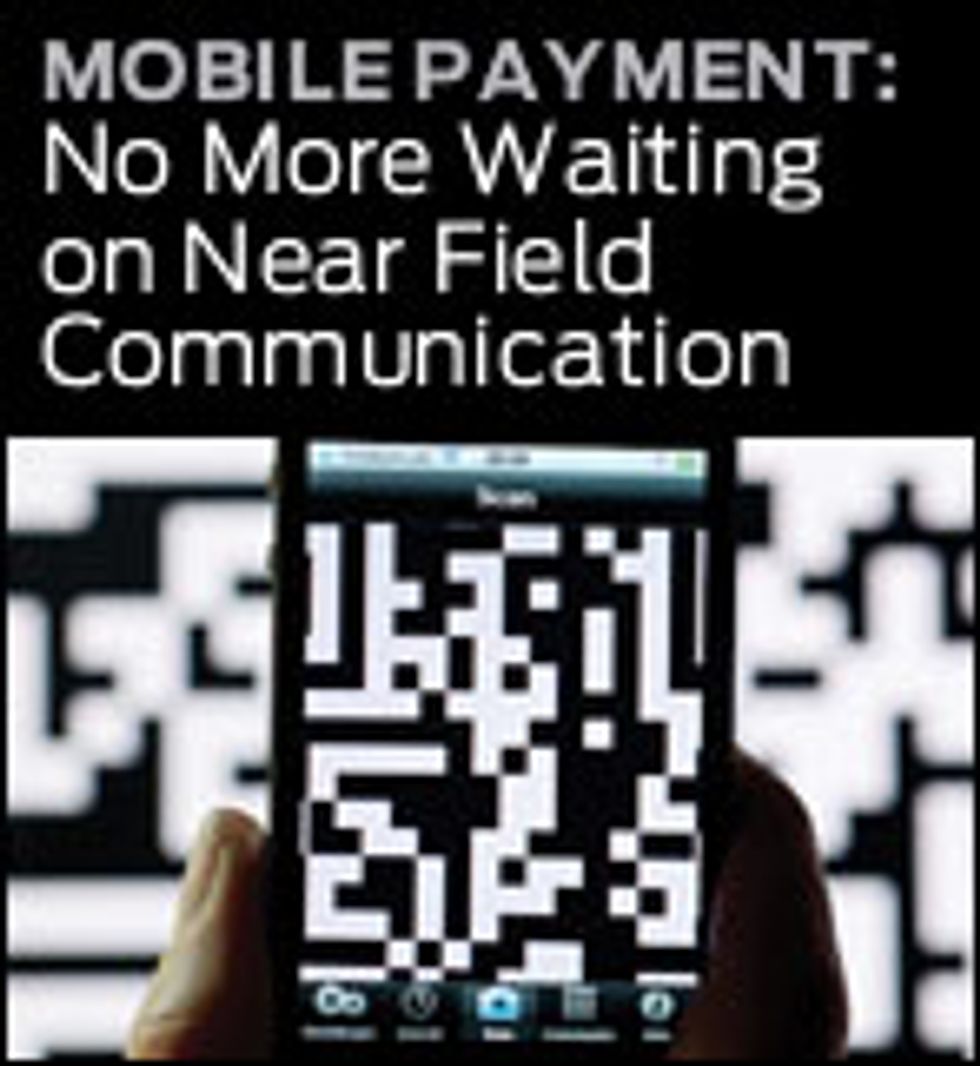Phone-y Money
Why marketers are cramming digital wallets down our throats

In times gone by, when you suddenly realized you were missing something—that you were effectively naked—the thing you were likely missing was your wallet. No longer.
“People can go for a whole day without their wallet and not freak out,” says Bill Maurer, an anthropologist at the University of California, Irvine. “But if they’re missing their smartphone, it’s another story.”
That’s why marketers are now trying to hit you where it really counts—in your phone, or rather, a phone that will serve as your wallet. To that end, Google launched Google Wallet last year, collaborating with Sprint and Citi MasterCard. Google spent untold millions to subsidize the terminals that are increasingly to be found at checkout counters around the United States—terminals that can register the tap of a phone equipped with Near Field Communication (NFC).
It’s also what Verizon, T-Mobile, AT&T, and their partners plan to do this summer, when they begin to roll out their rival service, Isis Mobile Wallet. Around the world similar programs, notably Orange’s Quick Tap in Britain, are being unveiled.
In every case, what’s involved are coalitions of financial, wireless, and Internet players, each of which has its own reason for wanting a piece of your business. “The credit card companies take their cut, the terminal companies get to sell more terminals, and the Internet company—say, Google, for Google Wallet—in the long run would be gathering lots of valuable information on customers,” says Aravindh Vanchesan, a retailing and digital money analyst for the consultancy Frost & Sullivan. All the players will use that information, of course, to target ads to those customers.
These schemes have a lot of moving parts, Vanchesan notes, and right now he’s betting on Isis to beat mighty Google, because Isis has signed on the three biggest wireless carriers in North America. Google Wallet’s Sprint, by contrast, is the little fish in that pond.
But the most important moving part is the user, who may well ask, “What’s in it for me?” And at least for the two big schemes under way in the United States, the answer is: not much. It’ll take a fraction of a second less to buy something with a wave of your smartphone than with a swipe of your credit card, and it’ll be easier for retailers to e-mail promotions. That’s supposed to be a good thing.
Then again, with upsides like that, who needs downsides?
The pioneer of this form of marketing is Groupon, with its downloadable discount coupons. Its success appears to be what Google Wallet and Isis are trying to re-create and improve upon. The idea is to make promotions a much bigger part of a marketing strategy by hitting you when you’re most susceptible to persuasion—at the very moment you’re deciding whether, or what, to buy.
It’s the dream of every member of the value chain—except the consumer.
“A lot of the work is just treating the phone as a form factor—another shape of credit card,” says Maurer, the anthropologist of money. “It doesn’t use the smartphone’s functionality.” In Kenya, he notes, people use simple cellphones to text-message money to one another [see “Let a Thousand Currencies Bloom,” in this issue]. Of course, in such emerging markets many users lack easy access to banks and credit cards, and they typically buy wireless service by the minute. But it might work even in Britain, where the telecom and Internet provider O2 has just announced an app that allows any phone with an Internet browser to message up to £500 to any other phone with the app.
No such scheme has been broached in the United States, where nobody seems terribly enthusiastic about Google Wallet or the upcoming Isis. Indeed, the two services are vying for the title of Least Communicative Communications Service. A spokesman for Google Wallet promised to call IEEE Spectrum; we’re still waiting. A spokesman for Isis offered to answer e-mailed questions but demurred after seeing them.
Google’s reticence, at least, is probably attributable to difficulties with the business and to a lesser extent the technical rollout, according to analysts familiar with the situation. Rick Oglesby, who works in the Phoenix office of Boston’s Aite Group, says Google is rethinking its strategy of simply emulating credit cards on a smartphone. Google had favored this emulation scheme because it allows the company to avoid having to negotiate terms with each of the thousands of retailers out there who are already comfortable with credit cards.
Google may or may not have agreed to share revenue with Sprint, its wireless partner in this venture; neither one of them is saying. In any case, Google certainly has had to jump-start the manufacturing of Android phones that include the necessary chips for Near Field Communication, or NFC. The company has also fronted much of the cost of installing hundreds of the MasterCard Paypass terminals that read the NFC signals emanating from those chips. Oglesby says Google might instead store buy-and-sell information on a server that user and merchant can access through the mobile Web, thus circumventing the credit card companies’ in-house networks.
1997: In Helsinki, a mobile phone is used for the first time to buy something: a soda from a Coca-Cola vending machine.
In the end, Google wants to take a cut on the redemption of coupons and other offers that Google Wallet would deliver to the customer, much as the search company now takes a cut from click-throughs on its online ads. With this scheme, Google would get a fee every time it steered someone to buy something in a brick-and-mortar store.
Isis, Oglesby points out, is different: Because it’s a creature of the big wireless carriers, it has good reason to stick with credit card emulation. “Their model is to manufacture phones with these secure [NFC] chips inside, in such a way that they own that chip,” he says. “They are thus providing access to that chip for a fee.”
So, is anybody at all trying to dream up services that will appeal to the consumer? Well, there’s Square, in San Francisco, which is making a little dongle that turns a smartphone into a credit card swiper. Basically, Square is of interest to people who are paid frequently for relatively small products or services—say, for produce at a farmer’s market, or landscaping, or child care. It also makes it easier for a fundraiser to corner a prospective donor for a handout at an event. “If they say, sure, they’ll send a check later, I can pull out my phone and say, ‘Why not just swipe your credit card right now?’ ” explains Shaun Smith, a manager at Chess in the Schools, a nonprofit based in New York City. And there’s the past master of virtual payment, PayPal, about to launch its Digital Wallet, which will allow two users to transfer funds by tapping phones and let anyone juggle money in ways that once would have required a sit-down with a banker.
There’s no reason why Google Wallet and Isis can’t also find ways to please consumers while enriching themselves and their partners. And maybe they will, once they’ve built up their businesses enough to generate network effects of scale.
Look at the history of the credit card. Like the digital wallet, it began as a marketing ploy, a way for oil companies to instill loyalty in motorists in the United States in the 1920s. Next came general-purpose credit cards for businessmen on expense accounts. Finally, those cards shouldered aside travelers’ checks. But the transition took a lifetime to accomplish, and we’re talking about credit cards, which were obviously useful from the get-go. Digital wallets as they are presently constituted are not. What’s needed is someone to reimagine things from the user’s point of view, the way Google did exactly once in its history, when it ranked websites by popularity and placed relevant ads in parallel, but at a discreet distance.
This time around, Google seems to be looking at everything from one point of view only: its own.


